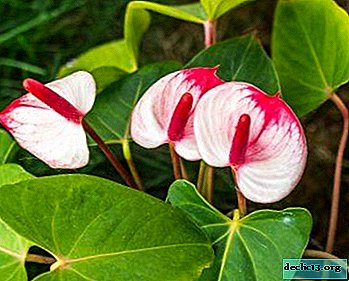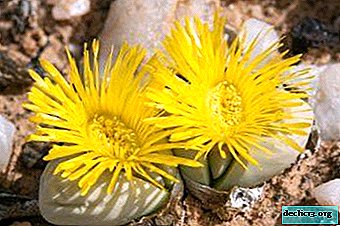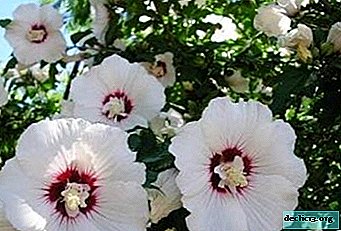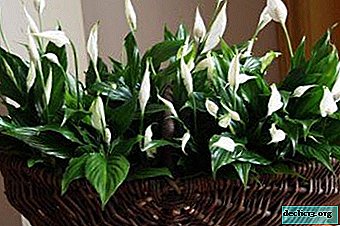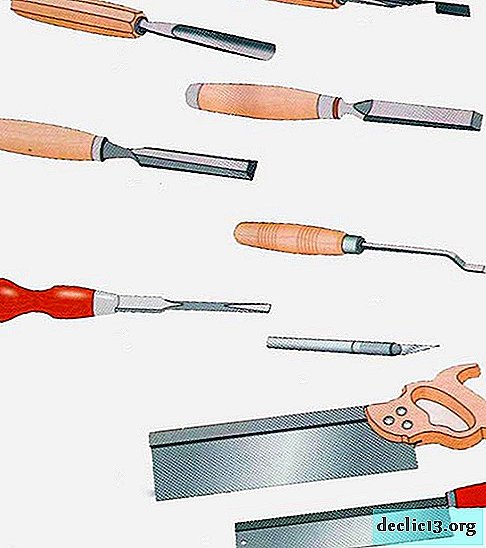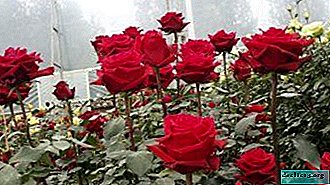Proper pruning of roses in the fall: purpose, implementation and processing after the procedure
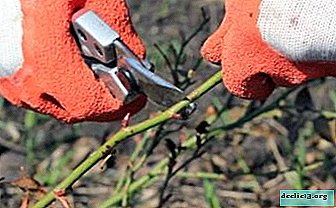
Rose is a noble flower, a favorite of flower growers, it attracts with its beauty. Modern varieties of roses bloom twice a season, which allows you to admire beautiful flowers from May to frost.
In order for a flower to fully reveal its beauty, it is fragrant in the summer, proper agricultural technology is necessary.
Pruning is considered a significant event in the care of roses, thanks to it, the bushes are actively developing and have a beautiful decorative look, bloom lushly. In the article you can find out when it is better to cut roses and how to do it correctly.
Benefits of Autumn Pruning
When is it better to crop - in the fall or in the spring? Many experienced flower growers favor autumn pruning of rose bushes. It is necessary to prepare roses for a safe wintering, further development and the formation of full buds in the spring.
Benefits of Autumn Pruning:
- plants are more convenient to shelter for the winter;
- plants are protected from infection by microorganisms and diseases if diseased shoots are removed;
- accumulate nutrients;
- successfully developing the root system, which improves plant nutrition;
- new shoots develop and a large number of peduncles are laid.
Trim target
The main goal is to prepare roses for winter so that the plant survives winter frosts safely. Proper pruning in the fall helps to stimulate the growth of new shoots and the development of the root system, rejuvenation of the plant (a rose can grow in one place and fully bloom up to 25 years).
The consequences of a lack of procedure
Roses love heat, so they need to be prepared for the cold. For the winter, roses are sheltered. It is difficult to hide uncircumcised overgrown bushes under cover material. The branches intertwine, interfering with the passage of air, which leads to a violation of air exchange and decay of the bushes.
What parts of the plants are removed?
Pruning of rose bushes is carried out in dry sunny weather at an air temperature below five degrees, before sheltering roses for the winter. Carrying out the procedure in warmer weather will lead to stimulation of the growth of sleeping buds, they will not be able to endure frosts and shoots will die. Be sure to remove:

- diseased, broken, damaged shoots to healthy white wood to prevent the spread of the disease;
- dead branches are removed to the base;
- shoots older than three years old, they are lignified, the bark becomes dry, moisture and nutrition are poorly received on such stems;
- young undeveloped shoots, they will not tolerate frosts and will take away from the bush forces for wintering;
- shoots growing inward;
- unripe and thin shoots thickening the bush;
- all basal shoots;
- dried leaves, unblown buds and wilted flowers.
Step by step instructions
Instruments
The tools you will use must be clean and dry. It is imperative that the cutting tool blades are sharpened sharply. Before work, tools are treated with alcohol or a solution of potassium permanganate so as not to infect plants with microbes and to avoid the spread of various diseases. Necessary tools:
- Secateurs. Used to cut thin stems with a diameter of up to two centimeters.
- Garden hacksaw. Used to remove thick, lignified branches.
- Garden shears with long handles. Used to cut remote branches of climbing roses and tall rose bushes.
- Thick gloves to protect hands.
Definition of a part of a plant
Which kidney should be cut off? Which part of the plant needs to be cut depends on the variety of roses. There are 3 ways to cut flowering shrubs:
- Short cut. It is used for small-flowered varieties of roses. On the shoot, leave 2-3 buds, cut the stems at a height of 15 centimeters from the ground.
- Medium circumcision. It is used for all types of roses, except ground cover and climbing varieties. The stems are cut at a level of 35 centimeters from the soil, leaving 5 to 7 buds on the shoot.
- Long circumcision. It is carried out for large-flowered varieties of roses when the buds are on the top of the shoot. Only the top of the stem is cut, leaving 10 to 12 buds on the shoot.
Manipulation
Before starting work, you need to carefully cut off all the remaining leaves on the branch with your hands. Under snow or shelter, the leaves continue to breathe and release moisture, which leads to decay and the spread of disease.
It is important to cut correctly so that the plant recovers quickly.The slice is made at the height of one centimeter above the unblown kidney, if you make it closer, then you can damage it. The bud must be external so that a new branch grows outward in spring, and not inside the bush.
The cut should be smooth, at a slope of 45 degreesso that raindrops and other moisture run off, there is no stagnation of water.
Treatment
The place of cut on the shoot must be immediately treated with an antifungal compound, then garden var, charcoal or a special gel-balm.
Preparing bushes before winter and shelter rules
 After pruning around the rose bushes, garbage should be removed so that it does not cause the spread of diseases from infected leaves and shoots.
After pruning around the rose bushes, garbage should be removed so that it does not cause the spread of diseases from infected leaves and shoots.
Before sheltering roses for the winter, plants must be treated against pests and microorganisms that cause disease in rose bushes. Depending on the temperature for processing use:
- at a temperature above +6 degrees spray 1% solution of copper sulfate;
- at a lower temperature with a 3% solution of iron sulfate.
After treatment, the plants are allowed to dry, spud to a height of 25 centimeters with ordinary soil and covered for the winter. There are many ways to hide roses from frost.
- Around the bush set a special frame, which is covered with coniferous spruce branches. With this method of shelter, the air circulates well, which prevents the formation of condensation on the branches of the bush.
- A popular method of protection is the use of film or burlap. The disadvantage of such a shelter is that it does not allow air to pass through, moisture forms on the branches. Inside the structure, it is necessary to pour sawdust that can absorb excess moisture.
Incorrect actions and consequences
Pruning is very important, further development of the bush, future flowering depends on its quality. I would like to protect beginning gardeners from mistakes during the autumn pruning.
- If after pruning a lot of old branches remain, then the plants cease to bloom, lose their decorativeness, then die. It is necessary to rejuvenate the bush, leaving only young formed shoots.
- Incorrectly cut the stem below the swollen bud, this leads to a slowdown in shoot development and late flowering.
- When leaving shoots growing inside the bush, thickening occurs. The bush is poorly ventilated, which leads to decay and disease. It is enough to leave five or six developed, young shoots.
- You can not use a blunt tool, it leaves a ragged cut or crushes the wood, which leads to decay and the development of diseases. Garden tools should always be sharpened.
Now you know how to conduct one of the main activities for the care of roses. Following the tips of the pruning article, caring for moody plants with love and care, even novice inexperienced gardeners will be able to grow beautifully flowering rose bushes. Try, go for it and the plants will definitely respond to your efforts with lush and prolonged flowering.
Useful video
We offer you to watch a video about the nuances of pruning roses in the fall:


